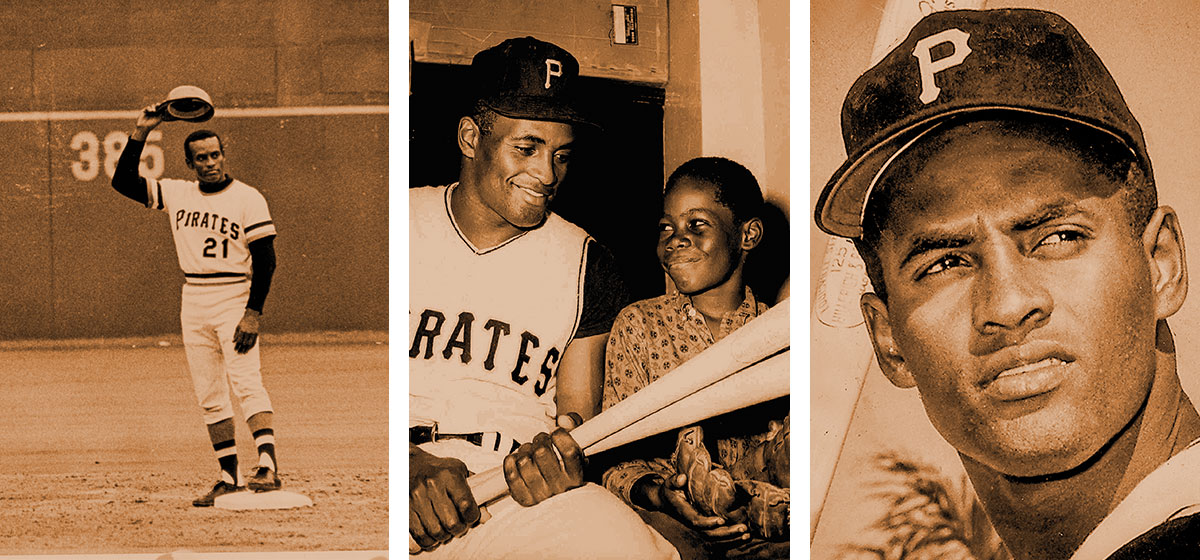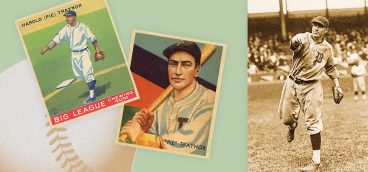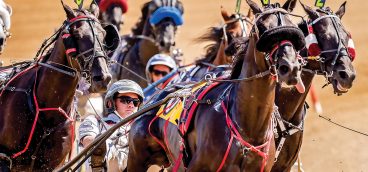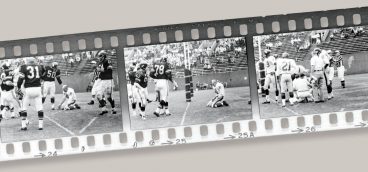
The last time Roberto Clemente stepped up to home plate was on a field on Puerto Rico’s west coast where he was teaching boys to play baseball. Locals had coaxed him into taking a swing, and he obliged, hitting the ball out of the park. It’s not surprising that one of the world’s greatest athletes could hit a home run, whether against local amateurs or professional baseball players. As Clemente once said of himself: “To me, I am the best.”
His honored life attests to Clemente’s self-esteem. The Hall of Famer played in 15 All-Star games, won 12 Gold Gloves, and was a multi-year batting champion, Most Valuable Player and two-time World Series Champion. On his final Major League at bat, he stroked his 3,000th hit. And 50 years ago this fall, he led the Pirates to an upset World Series victory.
But it was in death that he was most widely heralded. When the propeller jet he’d chartered to help Nicaraguan earthquake victims crashed on New Year’s Eve 1972, he became a mythical — to some, mystical — legend: an icon martyred in a mission of mercy.
Is Roberto Clemente a martyr? And is this what makes him “The Great One”?
Childhood reality
After a life that took him far from home, Clemente’s plane went down at a place called Punta Maldonado, which in Spanish means “ill favored.” The rocky point in the Atlantic Ocean was a few miles from the house in Carolina, Puerto Rico, where Clemente was born.
Roberto was the youngest of seven children. His father, Melchor Clemente, was a slim, 54-year-old sugar cane foreman who sometimes rode to work in the fields on a horse. Clemente’s mother, Luisa Clemente Walker — the maiden name comes last in Hispanic culture — was a widow with several children when she married Melchor. She lost her first-born child, Luis, one New Year’s Eve. Her daughter, Rose, died while giving birth. Another daughter, Ana, died when Roberto was an infant. A can of gasoline spilled in the kitchen, igniting and catching 5-year-old Ana’s dress. Three days later, the little girl died.
Pensive Roberto was nicknamed “Momen” for incessantly replying “momentito, momentito,” when he was pressured to act. He demanded a moment — time to think, contemplate and decide. As biographer David Maraniss wrote in “Clemente: The Passion and Grace of Baseball’s Last Hero,” Clemente was “intelligent and could not be rushed. He wanted to know how and why.”
Clemente loved playing ball, bouncing rubber balls off the home’s ceiling and walls. He especially loved baseball, idolizing outfielder Monte Irvin, to the point that he waited in front of the ballpark just to see Irvin pass by. As Maraniss wrote in 2006, Irvin returned the attention, making sure “that his young fan got in to watch the game, even without a ticket. ‘I used to give him my suit bag to carry into the stadium so he could get in for free,’ Irvin recalled. From a seat in the bleachers, Clemente studied everything about his hero: how he looked in a uniform, how he walked, how he ran, how he hit and especially how he threw.”
Clemente grew up fast. When he was 12, he witnessed a car crash, sprinting across the road to the scene and pulling a man from the burning vehicle. His speed was such that he was the best athlete on the school’s track team, prompting speculation he might be able to compete in the 1952 Helsinki Olympics. But Major League Baseball would soon come calling and even his chances there were nearly destroyed by another wreck on Dec. 30, 1954, less than four months before his debut in Pittsburgh. Roberto and a brother were driving home after visiting their terminally ill brother Luis when a car ran a red light at 60 miles an hour and slammed into them. The damage to three of Roberto’s spinal disks would leave him with back pain for the rest of his life and contribute to his habit at the plate of frequently pivoting and rotating his neck.
Such lessons of his youth in Puerto Rico haunted Roberto. Religion filled in the gaps. According to Kal Wagenheim in “Clemente! The Enduring Legacy,” his mother Luisa raised him to believe that God was omnipotent, teaching her son a hymn, which he sang over and over:
Sólo Dios hace el hombre feliz.
La vida es nada.
Todo se acaba.
Sólo Dios hace el hombre feliz.
The translation: “Only God makes a man happy. Life is nothing. Life is fleeting. Only God makes a man happy.”
The lyrics foreshadow the view that Roberto’s wife Vera, who died in 2019, ascribed to him. She said Roberto often told her that he believed he was “going to die young.” And his family frequently told the story that Roberto dreamed of watching his own funeral from the clouds and being on a plane spiraling downward.
Impressions and recollections
When Roberto arrived in Pittsburgh, he came with high expectations and made an almost instant impression among baseball professionals. Famed Pirates General Manager Branch Rickey, who’d hired Jackie Robinson for the Dodgers, had observed Clemente play early on and wrote that his “form at the plate is perfect. The bat is out and back and in good position to give him power. There is not the slightest hitch or movement in his hands or arms and the big end of the bat is completely quiet when the ball leaves the pitcher’s hand. His sweep is level — very level.”
Teammate Steve Blass described his body as “a baseball machine.” Columnist George Will called him “a cauldron of energy.” And a photographer noted that “he could have posed for Greek statues… Not an ounce of extra fat. All the right muscle. A perfect figure for a man of any age.”
Pirates broadcaster Nellie King wrote that “Clemente, to me, was like an artist. Artistic people have greater sensitivities. They are different… they see, feel and hear things differently. Clemente’s sensitivity was toward his body. It was his cathedral.”
That body — which one sportswriter compared to Michelangelo’s statue of David — improved with age, though his family wrote that “the most anyone saw Clemente do was use 10-pound dumbbells or resistance bands to fine-tune his biceps.” Maraniss wrote that, at 38, Clemente had “muscled shoulders rippling down to a narrow waist, 30 inches, the same measurements he had as a teenager.”
The late Pirate great Willie Stargell simply noted that his 5-foot-11 teammate “walked a little taller than most men.”
The Clemente family memoir captures a 1971 game inside the Houston Astrodome: “The Pirates were leading 1–0 in the bottom of the eighth inning, with two outs. Joe Morgan was on first base, and Bob Watson was at the plate. Watson hit a pitch (and) the ball started to severely slice toward the right-field corner. Clemente was in hard pursuit. It seemed a matter of certainty that Clemente would slow to avoid running into the outfield fence. He didn’t. His body fully extended and his back to home plate, Clemente snagged the ball just as it was about to clear for a home run, then crashed into the fence and hit the ground. It was such an impressive play that the more than 16,000 Houston fans gave Clemente a standing ovation. The result of the collision with the fence was Clemente slicing his left knee, bruising his left elbow, and injuring his left ankle. Since the game wasn’t on television, it was never recorded, and thus never widely seen.”
Clemente was candid, not humble, with the press about the condition of his body, explicitly discussing pain, the spinal injury and hospitalization for malaria. The resulting reputation for complaining and hypochondria was something that the Pirate most familiar with Clemente rejected. “I was always working on him to ease the pain, and he pushed through it,” said his trainer, Tony Bartirome, who became a friend. “He wasn’t a hypochondriac. He was a fighter.”
Bartirome called Clemente “one of the funniest guys I’ve ever been around… In the trainer’s room, he was always laughing… It was a pleasure to be around him.”
Roberto’s first friend in Pittsburgh was a postal worker named Phil Dorsey, who, like Clemente, served in the U.S. military reserve. Dorsey and Clemente went to the movies — Roberto loved Westerns — played cards and pool and ate Chinese food. Clemente grew to love the Steel City, culminating in the Pirates 1960 World Series championship victory over the New York Yankees when, as Maraniss wrote, Pittsburgh “lost itself with these Pirates. Bands of businessman crowded the congested streets of the Golden Triangle…[chanting] ‘Beat ‘em Bucs!’”
Invariably, those who saw Clemente play at Forbes Field or Three Rivers Stadium remember the experience. The outfielder was perpetually alert, activated and in control, never idle-bodied or-minded; Clemente played on his terms — always in play. He cut an indelibly composed figure with a unique batting stance, firm grip, handsome face, large hands, ebony skin — later, the 1970s sideburns — as well as the occasional flash of his dimpled, bright smile contrasted by his purposeful, prominent brow and the sense that he was serious. Letting the heavy bat fall with grace from his fingertips after a hit became his signature gesture.
Pirates fans revered Roberto Clemente, and the goodwill was mutual. Pittsburgh fans, Clemente said, “made everything worthwhile.” They were the reason he was glad the Pirates won the 1971 World Series and called Pittsburghers “the best fans in the world.”
Sculptress Susan Wagner, who created the Roberto Clemente statue by Sixth Street’s Roberto Clemente Bridge outside the gates of PNC Park, said that, when Pittsburghers learned she was sculpting his likeness, they “wanted to touch me… Everyone was in love with this man.”
The content of his character
In the off-season, Clemente walked along Puerto Rican beaches, looking for driftwood, which he liked to carve into lamps and other furniture. He’d examine his bounty, inspecting “the hardness and grains of different woods,” Maraniss wrote, adding that Roberto favored “the widest grains for his custom-made bat, knowing that these came during summer growth; he was that precise.”
When he could afford to buy and own a home, Maraniss noted that he purchased one in Puerto Rico with a “bridged front walkway leading from the street over shallow moat-like ponds to the front door, wide spaces for plants everywhere, the panoramic view down the hill and off towards San Juan and the Atlantic.” The Clementes furnished their home with an electric organ, which Roberto taught himself to play, to entertain the constant stream of visitors.
In his 2001 biography, “Roberto Clemente: The Great One,” Bruce Markusen wrote that Clemente was happy “making ceramic figurines and lamps, sculpting driftwood, listening to classical music, writing poetry and playing musical instruments.” He also taught himself carpentry, grammar and ham radio. He enjoyed reading, especially newspapers, comics and “The Count of Monte Cristo” by Alexandre Dumas. He listened to Sinatra and Nat King Cole records. He rode a bulldozer to landscape his nine-acre farm, where he raised hogs and built a restaurant. Suffering from insomnia, Roberto learned to administer self-care, including rolfing to reduce chronic pain.
He supported the civil rights movement, hosting Martin Luther King, Jr. at the farm, studying Rosa Parks and leading his Black teammates’ protest against the Pirates’ segregationist practices in the South. The Pirates accommodated his requests.
Clemente was patriotic, calling America “the best country in the world” and serving for six years in the U.S. Marine Corps Reserve. In one of his last interviews, according to the family memoir, he said: “I don’t believe in color; I believe in people.” Clemente was willing to help people — but only if he thought he alone could help, and this desire to help when most urgently needed was balanced with the deft awareness not to impose guilt on others. During one TV charity pitch, Maraniss noted that, periodically, Clemente urged people not to give money they could not afford.
Roberto’s friend Luis Mayoral remembered that he “had the mind of a philosopher. He had the fire within him, a lot of pride, but it was not the kind of pride that would ever allow him to downgrade another individual… He created a conscience related to the strugglers: The guy in the factory in Pittsburgh, the guy in the factory in Puerto Rico, the taxi driver, the nine-to-five guy. His sense of pride was their sense of pride… He was trying to help people better themselves.”
Call of duty
Clemente had visited Nicaragua twice before — once in 1964 and, again, in 1972, weeks before the Dec. 23 earthquake. Whatever else may have influenced his decision to board an overloaded DC-7, it was clear that he was under pressure. As historian Robert Ruck put it in a PBS documentary, Nicaraguans were horrified by looting and corruption and called Clemente, saying, “Roberto, you have to come.”
Appeals to Roberto’s ethnicity also played a role. Luis Vigoreaux, a Puerto Rican TV producer who had befriended Nicaraguans at a broadcasting convention, persuaded Clemente to put his name on a charity for what Vigoreaux called U.S. territory Puerto Rico’s “sister country.” Puerto Rican politician and baseball club owner Pedro Zorrilla, son of Puerto Rican poet and nationalist Enrique Zorrilla, similarly had instilled in Roberto a sense of duty based on race and blood.
Clemente had recently managed Puerto Rico’s entry in amateur baseball’s world series in Nicaragua and, listening to his ham radio, he received a frantic request from a hospital near Managua for tracheotomy tubes, anesthetics, a water pump and an X-ray machine.
He decided to go and leased a plane, but one which had recently been damaged after ending up in a ditch.
“‘Don’t go on the plane,’ I told my dad,” his 8-year-old son, Roberto Jr., pleaded following a pre-flight nightmare.
Maraniss reported that Cristobal “Caguitas” Colón, a businessman helping the charity drive, “advised him that the aircraft was unsafe and improperly loaded.”
José Pagán, one of his Pirates friends, urged Roberto: “Don’t do it,” adding, “you know everything about baseball, but very little about airplanes.”
Luis Olmo, a top figure in Puerto Rican baseball, later admitted that he didn’t see any reason for Clemente to go on New Year’s Eve. “The reason he went, I don’t know.”
Colón said that when he expressed concern about the flight’s safety, Clemente told him, “Don’t worry. They know what they’re doing,” and that the heavy weight on the visibly low tires didn’t bother him.
Why did Roberto reject pleas not to board that plane on New Year’s Eve in 1972? Did “Momen” breach his standard to think twice so that he could help others?
Questions abound. When Colón tried one more time to persuade him not to board, Roberto replied with the equivalent in Spanish that “[w]hen your number is up, it’s up.”
Aside from the pilot and co-pilot, Clemente and his friend Rafael Lozano were on board as the plane prepared to leave. Markusen recreated the flight in his biography:
“As the plane lifted off, an airport employee heard one of the plane’s four engines vibrating ‘excessively.’ Shortly after takeoff, pilot Jerry Hill sensed trouble with one of the engines, which had caught fire. Hill tried to return to the airport, attempting an abrupt left-hand turn. Watching from the ground, a man named Jose Antonio Paris heard an explosion as the plane neared the water’s edge. ‘There were three more explosions after that,’ Paris said, offering a rare eyewitness description. After the second explosion, co-pilot Rivera mistakenly retracted the plane’s flaps instead of the landing gear. At 9:23 p.m., another explosion occurred as the plane plunged nose-first into the Atlantic Ocean, about a mile and a half from the shore. Within five minutes, the plane had completely submerged.”
Why Clemente would leave his wife and three sons — Roberto, Jr., Luis and Enrique — on New Year’s Eve and board a propeller jet which he almost certainly knew was at some risk remains an unanswered question. His family members have lived with the question for 50 years. They have their own way of answering.
“Everything my dad was about, how he dedicated his life to helping others, is summed up, in a way, with how he died,” Roberto Clemente Jr. wrote in the family memoir.
For his part, Roberto Clemente always affirmed that he enjoyed living. “I don’t want to accomplish something so I can be able to say, ‘Hey, look at me; look at what I did.’ I want to accomplish something for life.”
The day after Clemente died, Pittsburgh Press sports editor and columnist Roy McHugh, who had covered and captured Clemente’s mythical aura, put the tragedy in context:
“Babe Ruth, wasted with cancer, was led before 60,000 well-meaning viewers in Yankee Stadium to croak a few words into a microphone. In much the same setting a dozen years earlier, Lou Gehrig, dying of a spinal-cord disease, had said in a choked voice that he was the luckiest man on the face of the earth. Jackie Robinson’s woes — blindness, diabetes, failing heart, the loss of a son in an automobile accident — were doleful harbingers of death. Clemente went suddenly, in the full flush of the acclaim he knew he deserved.”







